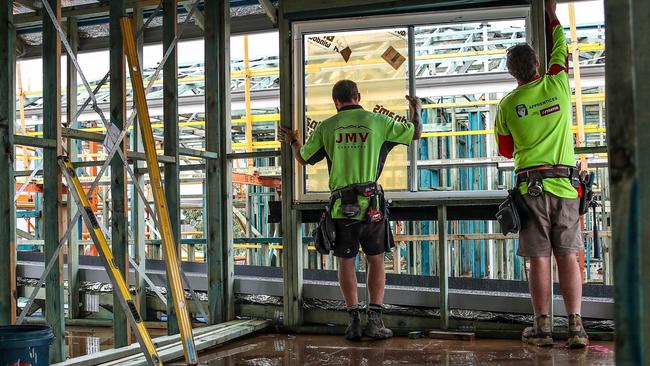Relief for families threatens interest rate rise
The risk of further mortgage pain comes ahead of the start of tax cuts and a fresh round of energy bill relief from next week that economists worry will make the nation’s inflation challenge worse.

There is nearly a one in five chance of a rate hike at the Reserve Bank’s next meeting in August, according to financial markets, ahead of the start of tax cuts and a fresh round of energy bill relief from next week that economists worry will make our inflation challenge worse.
Monthly consumer price figures on Wednesday are expected to show inflation accelerating to 3.8 per cent in the year to May, from 3.6 per cent, confirming a worrying upward trend in 2024 that has spooked the RBA board into reconsidering if further interest rate rises may be needed.
Westpac has estimated that the decisions taken in federal and state budgets – including extra infrastructure spending – will pour an extra $60bn into the economy in the next financial year, adding to economic activity and potentially delaying much-needed mortgage relief.
That comes on top of the $23bn in tax cuts in 2024-25 taking effect from next month.
Jim Chalmers on Monday spruiked his government’s cost-of-living support, which Treasury has estimated will reduce headline inflation by 0.75 percentage points this financial year, and 0.5 percentage points in the next.
“On the first of July, one week from today, we’ll see that tax cut for every taxpayer, we’ll see the beginning of our energy bill relief, we’ll see cheaper medicines, we’ll see a pay rise for people on awards and an extra couple of weeks of paid parental leave,” the Treasurer said.
“The first of July is a really important day for the people of this country who need and deserve the cost of living relief that we have budgeted for.”
NAB head of market economics Tapas Strickland said he still expected rates to move lower in November, but there was “a genuine tail (outside) risk that the RBA isn’t done yet”.
“Inflation does appear sticky on the services side. The RBA is testing the limits of their flexibility, and it doesn’t take too much to tip it over that limit and lead to them delivering an ‘insurance’ rate hike,” Mr Strickland said.
Rather than cost-of-living relief, the massive infrastructure spending pipeline was responsible for keeping growth in residential building costs higher, which “probably keeps inflation a little but higher for longer”, he said.
Mr Strickland said Wednesday’s consumer price figures from the Australian Bureau of Statistics would show inflation steady at 3.6 per cent in the year to May, against the consensus expert forecast for a 0.2-percentage-point increase to 3.8 per cent.
With critical June quarter inflation figures due on July 31, traders in financial markets are factoring in a 17 per cent chance of a rate hike to 4.6 per cent at the RBA board’s two-day meeting on August 5-6.
Mr Strickland said a rise in underlying inflation of 1 per cent in the three months to June would leave the central bank with little option but to hike.
The probability of hikes, according to financial markets, then falls before flipping to a nearly 100 per cent chance of a rate cut to 4.1 per cent by May 2025.
Dr Chalmers on May 14 revealed all households would receive $300 energy bill relief in the coming financial year. There was also an extra $1.9bn over four years to fund bigger rental subsidies for one million families.
All up, policy decisions in the May budget add up to an extra $9.5bn in additional spending in 2024-25, and an extra $10.3bn the following financial year.
The average Australian family will pay $42 less tax per week, according to Treasury analysis.
The RBA, in internal documents, described the federal budget as “slightly expansionary”, while S&P Global Ratings described it as “mildly inflationary” and that it could make it harder for the central bank to bring inflation back to its 2.5 per cent target.






To join the conversation, please log in. Don't have an account? Register
Join the conversation, you are commenting as Logout